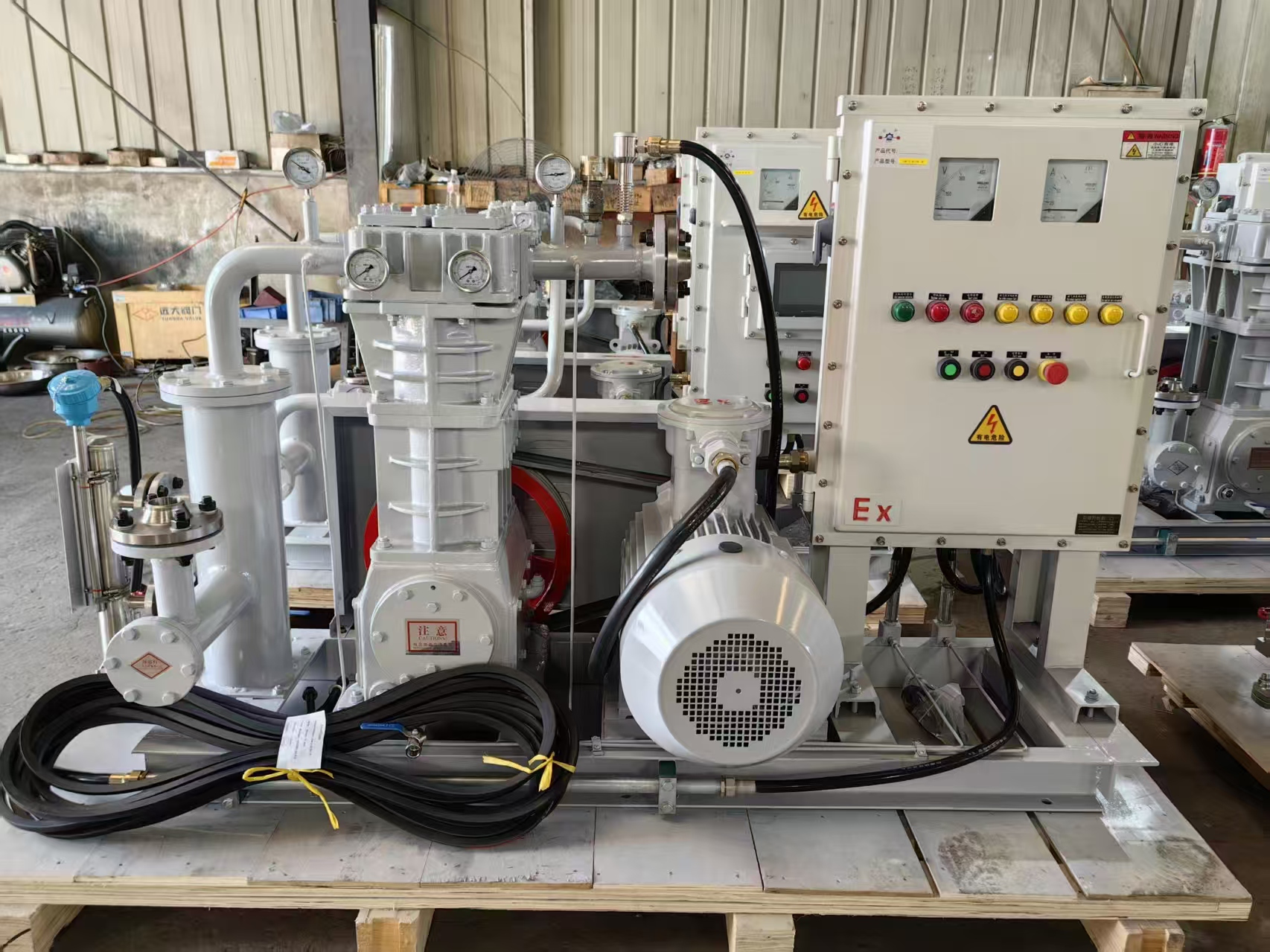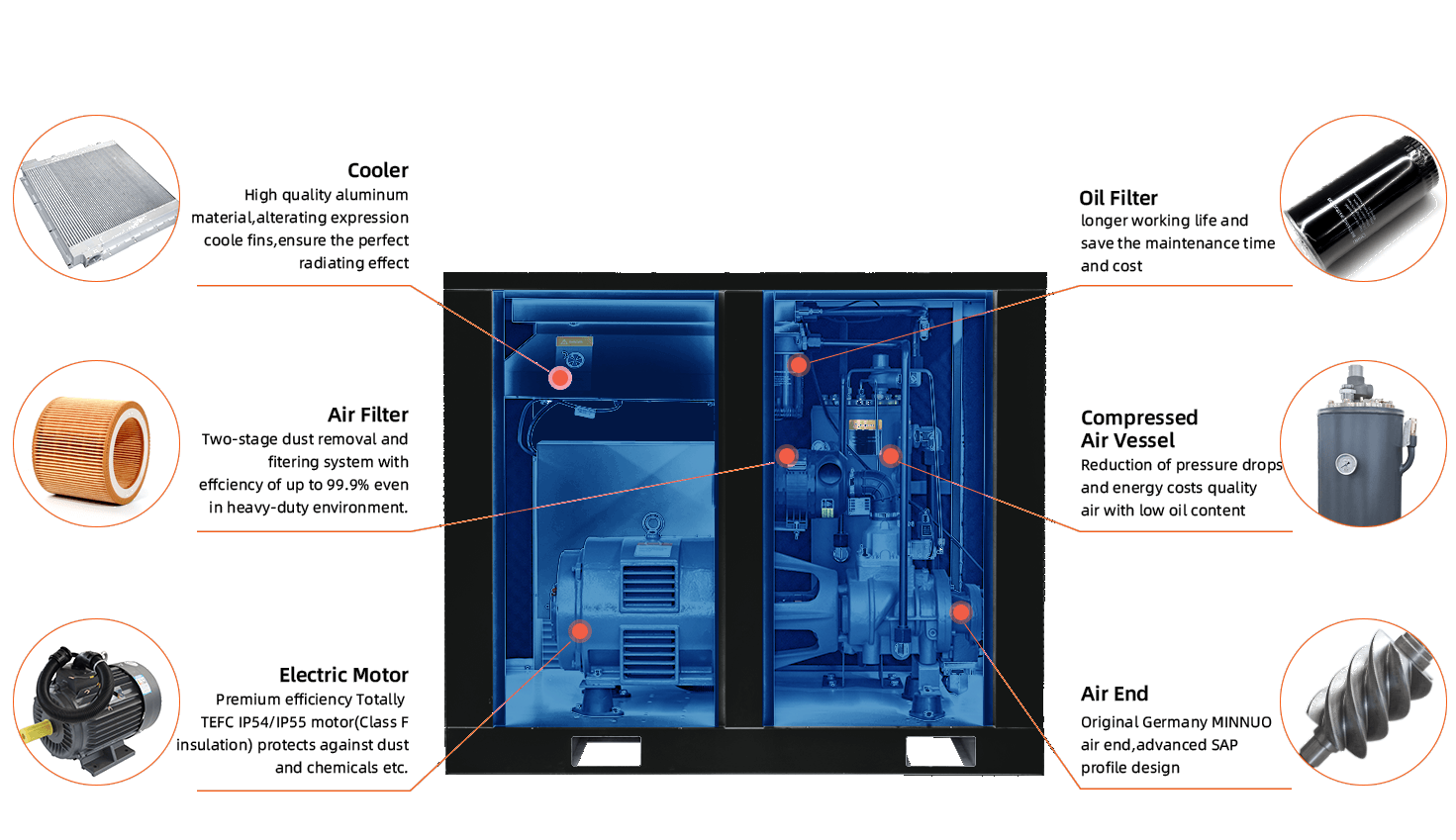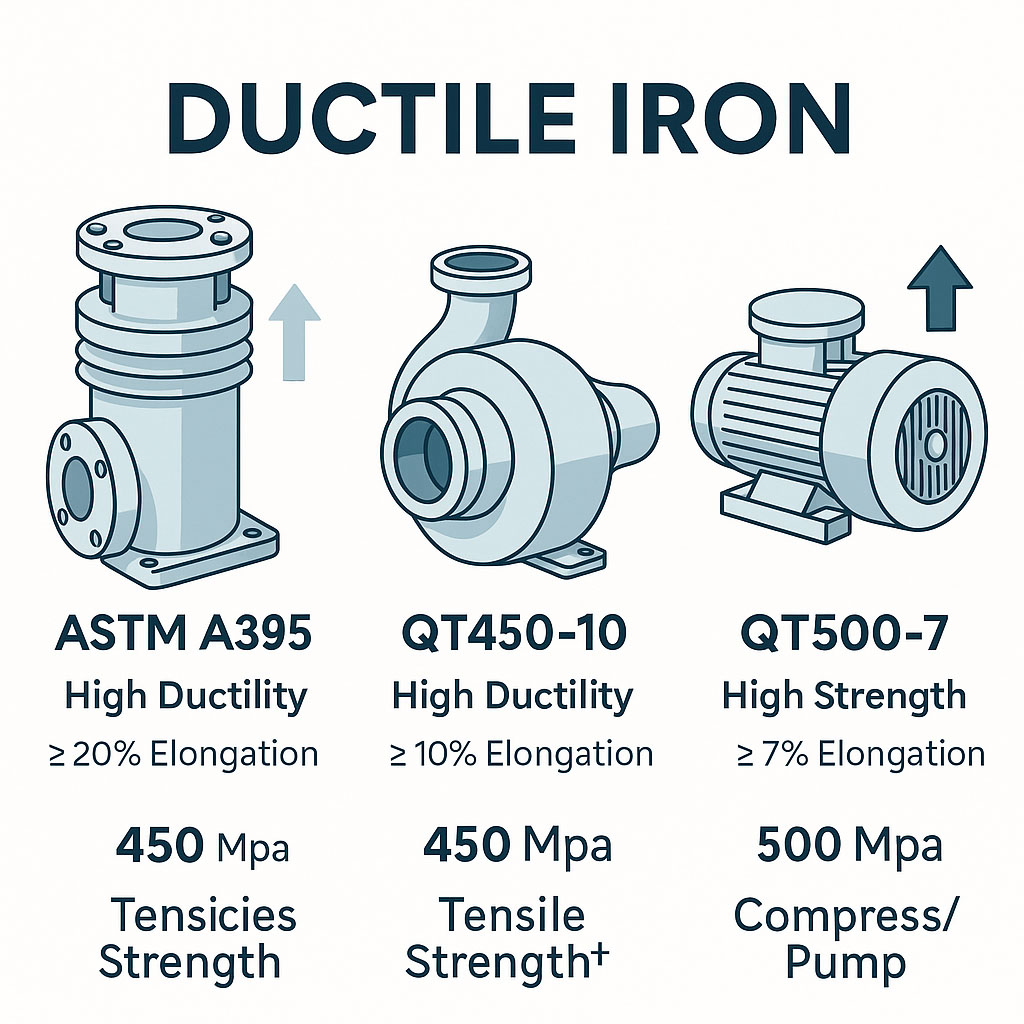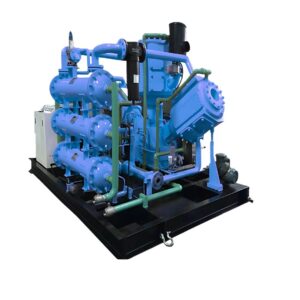산업 공정에서 고압 가스 공급이 필요한 경우, 왕복식 가스 컴프레서-피스톤 컴프레서라고도 하는 이 제품은 종종 스트라이프를 획득합니다. 스크류 기반 장치와 달리 높은 압축비, 효율적인 설계 외 작동, 가스 유형 다양성에서 탁월합니다. 하지만 올바른 모델을 선택하려면 기술, 크기, 재료, 유지보수 요구 사항의 균형을 맞춰야 합니다.
1. 왕복동 대 나사: 기술 파악하기
-
압력 기능: 왕복동 컴프레서 제공 훨씬 더 높은 압력 (종종 1,200 PSI 또는 ~80 bar를 초과), 스크류 컴프레서는 일반적으로 ~250-600 PSIG로 제한됩니다.
-
듀티 사이클 및 노이즈: 스크류 컴프레서 제공 사항 지속적인 작동과 더 부드럽고 조용한 성능. 왕복동 장치는 주기적으로 작동하고 더 많은 진동을 발생시키지만 부분 부하 조건에서 더 나은 성능을 발휘합니다. .
-
애플리케이션 적합성: 왕복동 장치는 고압, 간헐적 사용 또는 스키드 장착형 gbp 컴프레서 설정에 적합하며 다음과 같이 이상적입니다. 산업용 피스톤 컴프레서 석유 및 가스, 공정 플랜트 또는 질소 부스팅 라인에 사용됩니다.
🛠 Keep-Win 전체 살펴보기 [왕복식 가스 압축기 범위](https://keep-win.com/products/reciprocating-gas-compressors)는 고압의 다단계 요구 사항에 맞게 조정되었습니다.
2. 압축기 크기 조정: 과소 또는 과대 설계 방지
적절한 사이징은 안정성과 에너지 효율성을 보장합니다. 올바른 사이즈를 선택하는 방법은 다음과 같습니다:
-
명확한 프로세스 요구 사항 정의: 필요한 유량(CFM/Nm³/h) 및 토출 압력을 결정합니다. 최대 수요 및 확장 계획을 고려하세요.
-
요인 동시대성 및 안전 마진: 다수의 동시 사용자의 경우, 약 20-30% 동시성을 가정한 다음 압력 강하 또는 크기 부족을 방지하기 위해 25-50% 안전 계수를 추가합니다.
-
매치 듀티 및 실린더 디자인: 대부분의 단일 스테이지 피스톤 컴프레서의 듀티 사이클은 50%로, 과열을 방지하고 냉각을 위해 더 큰 모터가 필요합니다.
주요 변수: 필요한 PSI/bar, 자유 공기 공급량(CFM/Nm³/h), 듀티 사이클 및 에너지원.
3. 가스 특성 및 재료 호환성
왕복식 레프렉터는 특정 가스 특성, 특히 공격적이거나 고순도 가스를 처리해야 합니다. 고려하세요:
-
부식성 또는 마모성 가스 스테인리스 스틸 피스톤, 라이너 및 특수 밸브 재료가 필요할 수 있습니다.
-
씰 디자인 캐리어 오염을 방지해야 합니다. 순도가 중요하거나 위험한 가스에는 2단계 또는 퍼지 패킹 씰 시스템이 필수적입니다.
-
API 618 변형 는 고장력 봉과 단조 부품으로 제작되는 석유화학 또는 극저온 서비스에서 흔히 볼 수 있습니다.
Keep-Win의 컴프레서는 공정 가스, 부식성이 높은 환경 또는 고순도 표준에 맞게 맞춤 제작할 수 있어 모든 응용 분야에서 적합성과 신뢰성을 보장합니다.
4. 맥동, 진동 및 기초 요구 사항
피스톤 구동 컴프레서는 배관과 지지대가 제대로 설계되지 않은 경우 압력 맥동과 진동 루프를 생성합니다. 맥동 병, 지지대, 절연되지 않은 기초 또는 로드/피스톤 로드 예압을 무시하면 기계적 고장이나 씰 수명 단축으로 이어질 수 있습니다. 적절한 음향-기계 분석 및 TAPS 모델링은 장기적인 무결성을 보장하기 위한 일반적인 단계입니다.
Keep-Win은 현장 신뢰성을 보장하기 위해 완벽하게 설계된 맥동 억제 및 기초 회로도를 갖춘 API-618 스키드 설계를 제공합니다.
5. 유지 관리 계획: 검증된 체크리스트 사용
왕복동 컴프레서는 더 많은 수작업 유지보수가 필요하지만 올바르게 수행하면 가동 시간과 에너지 절감이 보장됩니다:
예방 체크리스트 주요 사항
-
매일 또는 시작 전: 윤활유 레벨 확인, 응축수 배출누수 또는 비정상적인 진동/소음이 있는지 관찰합니다.
-
주간: 벨트 장력 점검흡입 필터를 청소하고 배출 밸브 작동을 모니터링합니다.
-
월간 및 분기별: 교체 오일 필터스트레이너를 청소하고 실린더 간극 및 크로스헤드 토크를 확인합니다.
-
연간: 피스톤 링 교체, 셧다운 압력 테스트, FAT 수준의 rpm 진동 진단을 수행합니다.
Keep-Win 컴프레서는 전체 유지보수 일정, 부품 다이어그램 및 설치 시운전을 위한 서비스 키트와 함께 배송됩니다.
6. 라이프사이클 비용 및 안정성 트레이드 오프
왕복동 컴프레서는 일반적으로 스크류 장치보다 유지보수 비용이 높지만, 이를 상쇄할 수 있습니다:
-
수년에 걸친 장기 오버홀(긴 수명을 위해 설계된 로드, 밸브 및 링)
-
정격 조건에 가까운 우수한 압축 효율
-
다단계 시스템 및 다중 가스 회로를 위한 간편한 통합
스크류 유닛은 인건비를 절감할 수 있지만, ~8bar 이상의 압력 또는 주기적 응력이 심한 듀티 사이클의 경우 왕복동 컴프레서가 더 나은 수명 주기 경제성을 제공하는 경우가 많습니다.
7. 제어 및 통합 기능
최신 왕복동 컴프레서는 스마트 제어, 가변 언로더, 원격 모니터링 기능을 통합하고 있습니다. 제공되는 시스템을 살펴보세요:
-
로드/언로드 또는 스텝 언로드
-
내장형 계측 및 PLC 통합
-
누수 감지 기능 및 서지 보호 기능
킵워드 하드웨어에는 옵션이 포함됩니다. IoT 지원 모듈 를 통해 실시간 모니터링 및 알림을 제공하여 현장 방문 없이도 유지보수 및 가동 시간을 최적화할 수 있습니다.
요약 표: 주요 설계 고려 사항
| 주제 | 중요한 이유 |
|---|---|
| 압력 및 흐름 | 시스템 요구 사항 및 향후 확장에 부합 |
| 기술 유형 | 간헐적/고압 사용 시 왕복 운동 |
| 재료 및 씰 디자인 | 가스 호환성 문제 방지 및 순도 보장 |
| 맥동 및 기초 | 기계적 무결성 향상 및 다운타임 위험 감소 |
| 유지 관리 계획 | 일일에서 연간 유지 관리를 위한 체크리스트 따르기 |
| 라이프사이클 비용 | 단순한 초기 가격보다 효율성을 선호 |
| 제어 및 통합 | 로직 기반 관리를 통해 가동 시간 지원 |
Keep-Win의 솔루션 팩을 선택해야 하는 이유
Keep-Win은 다음을 제공합니다. API 618 준수 그리고 산업용 피스톤 컴프레서 단일 단계부터 다단계 구성까지 다양한 솔루션을 제공합니다. 기계 설계, 맥동 완화, 스마트 제어 모듈, 문서화된 유지보수 지원 등이 포함되어 있습니다. 자세히 알아보세요:
-
[왕복식 가스 컴프레서 시리즈](https://keep-win.com/products/reciprocating-gas-compressors)
-
[프로세스 가스 압축 패키지](https://keep-win.com/products/process-gas-compressors)
결론
오른쪽 선택 왕복식 가스 컴프레서 압력, 유량, 가스 유형, 기계 설계 및 수명 주기 유지보수에 대한 이해가 필요합니다. 크기, 맥동 및 유지보수에 주의를 기울인 이 컴프레서는 고압 또는 간헐적 사용 애플리케이션에 탁월한 효율성과 안정성을 제공합니다.
플랜트의 고유한 사양에 맞는 시스템을 설계하려면 지금 Keep-Win의 가스 엔지니어링 팀에 문의하여 맞춤형 권장 사항과 안정적인 배포를 요청하세요.











